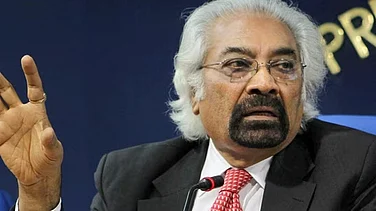Monday, December 13, marks 20 years to the deadly Parliament attack, carried out by Pakistan-based terror outfits.
Prime Minister Narendra Modi on Twitter, paid tribute to the security forces who lost their lives in the line of duty. “Pay my tributes to all those security personnel who were martyred in the line of duty during the Parliament attack in 2001. Their service to the nation and supreme sacrifice continues to inspire every citizen.”
Paying his tribute, President Ram Nath Kovind in a subsequent tweet said, “I pay homage to the brave security personnel who laid down their lives on this day in 2001, defending the Parliament of the world’s largest democracy against a dastardly terrorist attack. The nation shall forever remain grateful to them for their supreme sacrifice.”
Advertisement
How did the terror attack take place?
The then Home Minister and senior BJP leaders LK Advani had termed the attack, “the most audacious, and also the most alarming act of terrorism”.
An ambassador with five terrorists armed with Ak-47s and grenades had entered the Parliament House Complex on the morning of December 13, 2001, at 11:40 am. They had falsely pasted the sticker of the Home Minister on the windshield. However, when the car was nearing Building Gate No 12, one of the guards found it suspicious.
As the car was forced to turn back, the terrorists came out and started open firing at the security personnel. An alarm was raised and all the gates were ordered to be shut while the firing lasted for over 30 minutes. During the attack and counter-attack, all the terrorists were killed along with eight others and a gardener. The deceased included five security personnel of Delhi Police, one woman constable of the Central Reserve Police Force (CRPF) and two security assistants of Parliament Watch and Ward section. At least 15 people were injured. However, no ministers inside the Parliament were reported to be hurt but
Advertisement
It was later confirmed that the attack was carried out jointly by Pakistan-based and supported terror outfits Lakshar-e-Taibe (LeT) and Jaish-e-Mohammad (JeM).
Who were responsible and convicted?
Following the attack, the Delhi Police filed an FIR and within days, the Special Cell of Delhi Police traced down four accused -- Mohammad Afzal Guru, a former Jammu Kashmir Liberation Front (JKLF) militant, his cousin Shaukat Husain Guru, Shaukat’s wife Afsan Guru and Sayd Abdul Rahman Geelani, a lecturer of Arabic at Delhi University.
Following a matter that spanned for about 10 years, Afzal Guru was hanged on February 9, 2013. In 2003, Geelani was acquitted by the Delhi High Court on the “need of evidence”. Afsan was also cleared of any charges while Shaukat was sentenced to 10 years of rigorous imprisonment in 2005.
Afzal Guru’s remains were not handed over to his family and remains buried within the precincts of Tihar Jail.




















